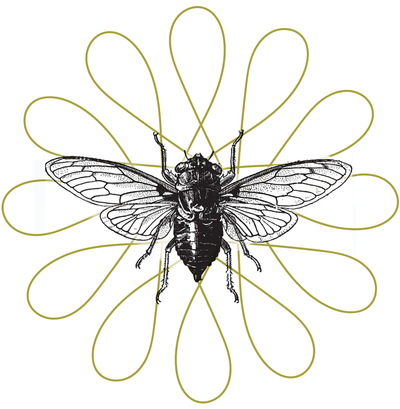
Return to the Path
Part I: The Reframe — Tiny returns over dramatic restarts.
The Swing & the Quiet Return
There are seasons you wake clear, keep promises to yourself, move with clean energy.
And there are seasons you go soft around the edges – delay, scroll, drift into the gentle pull of “not now.”
If you know that swing, this is for you.
It shows up in small ways – leaving your phone outside the bedroom, taking the ten-minute walk you said you would, cooking the simple meal instead of defaulting to “later.”
And in bigger ways – protecting a 90-minute block to do the work that matters, speaking gently instead of withdrawing, stopping the half-alive project that keeps you numb.
And, sometimes, in the deepest ways – ending what no longer fits, telling the truth you’ve been circling, choosing a life that actually matches your insides.
Midnight: a voice promises, tomorrow will be different.
Morning: another whispers, five more minutes.
By afternoon you’re negotiating like two strangers sharing a body.
It isn’t that you don’t care. It’s that many yous care in different directions. One reaches for clean lines and early mornings. One wants softness and warmth. Another wants to not feel anything for a while… They each pull for your good as they understand it.
When that happens, return – not with a flare of reinvention, but with the next honest step you can take from here.
Micro‑primer: your brain predicts first
One helpful lens from affective neuroscience: the brain is less a camera than a prediction engine. It uses past experience and body signals to guess what’s happening now, then updates that guess as new data arrives.1
On a Tuesday, those same ingredients can become very different meals:
- A racing heart, near-empty stomach, and a half-remembered slight → irritation.
- The same body state while you’re on a run with music and open sky → motivation.
- A fluttering chest before a first meeting → anxiety. The same flutter on the way to see a friend → excitement.
- 10 p.m.: low energy, a quiet house, and a familiar habit loop → a “hunger” for a snack (often fatigue or loneliness wearing the mask of hunger).
Prediction first, update second. In Constructed Emotion theory (Lisa Feldman Barrett), the brain uses past experience and body signals to predict what’s happening now, then updates that prediction with incoming data. Same body state, different stories – context and concept shape what you feel.3
Three anchors to remember
Emotions are constructed summaries – body sensation + concept + context.
Thoughts are proposals, not commands.
A craving is a forecast of relief, not a fate.
The swing you feel – between motivated/unmotivated, soothe/fix etc. – it isn’t you versus you so much as competing predictions (in IFS terms: different parts pulling for your good in different ways) shouting “This is what’s happening – act now!”
What changes everything is the you – the Self4 – that can notice a prediction before it becomes behavior and ask two simple questions: Is this true – or just familiar? and What’s pulling me, exactly? Then choose a smaller step instead of a bigger story.
Micro‑move: Name the pull. Feel your feet. Offer one true sentence about what matters today. Then do one small thing that matches it.
The Return
The path isn’t a “program” – not a 30-day overhaul, a rigid regimen, or a performative reinvention. It’s the line of coherence between what you value, what your body can sustain, and what this day asks of you.
The return to the path doesn’t have to be a grand restart – in fact, it shouldn’t be, because a restart burns novelty like fuel. Rather, it’s the next true step from where you are now, taken without ceremony.
You can often feel the drift: tight chest, shallow breath, restless hands. Mind and gaze narrow; everything feels crowded and a bit out of order. You start hunting for relief – old habits, quick numbing, easy wins.
A return feels different: jaw softens, breath settles into the abdomen, shoulders release, attention widens. You feel lighter; things clarify.
Why tiny returns beat dramatic restarts
The nervous system loves the dopamine of fresh starts – new rules, new gear, New Me™. They coax you to rebuild everything at once. But novelty burns fast, and resets are fragile: when real life bumps them, they topple. The more dramatic the plan, the more brittle; one wobble and the whole tower goes.
A return however, preserves trust. You keep one small promise now; your nervous system learns, we do what we say. Momentum grows from kept truths, not grand vows.
Tiny returns that endure: three honest sentences in the draft, a 20‑minute walk after lunch, one real message to someone who matters. Small on purpose; consistent on purpose.
Language that helps
- I’m back
- From here, not from perfect.
- Small, then consistent, then natural.
One-Minute Return – when you’ve drifted and want to come back without drama
- Exhale + land. Let your shoulders drop; feel your feet or seat.
- Name it. Say quietly: I’m back. From here, not from perfect.
- Choose one true line. One sentence that reflects today’s value.
- Match it with one tiny act (60–90s). Open the draft and add a sentence; pour a glass of water; put shoes by the door; send one honest message.
Direction, not drama
This isn’t giving up on transformation; it’s choosing the kind that lasts. A ship changes destination by a few degrees at a time – small course corrections, made consistently, carry you toward the life that fits. The work is to keep adjusting toward your truest values with respect and warmth for yourself. Discipline becomes devotion when Self leads.
(IFS readers: let every part speak; Self chooses the next step.)
Before we pause
In this first part, we named the swing, tried on a prediction lens for emotion, and practiced a tiny return – coming back from here, not from perfect. No grand vows, just one kept promise at a time.
Today my own return was small: closing three extra tabs and writing this paragraph before coffee. It was enough.
Thoughts, questions, or a tiny return you tried? I’d love to hear. Join the thread on Threads or Instagram, or pass this to one person who needs gentleness more than grit.
with steadiness and warmth,
Gustav
- For a clear intro to constructed emotion, see Lisa Feldman Barrett, How Emotions Are Made (2017). ↩
- On “parts” work, see Richard C. Schwartz & Martha Sweezy, Internal Family Systems Therapy (2nd ed., 2019). ↩
- On predictive processing more broadly, see Jakob Hohwy, The Predictive Mind (2013). ↩
- On meta-awareness / decentering, see reviews in cognitive science (e.g., Schooler and colleagues). ↩


